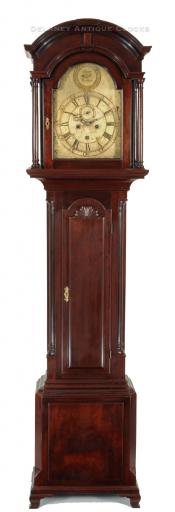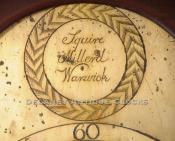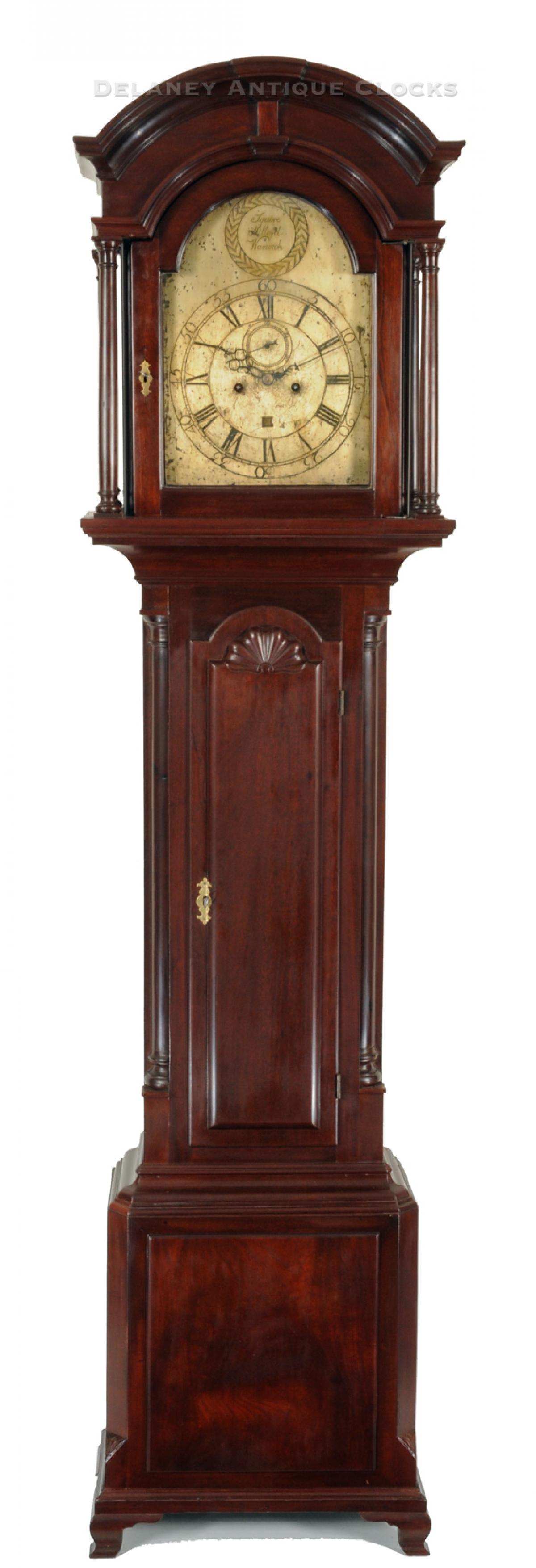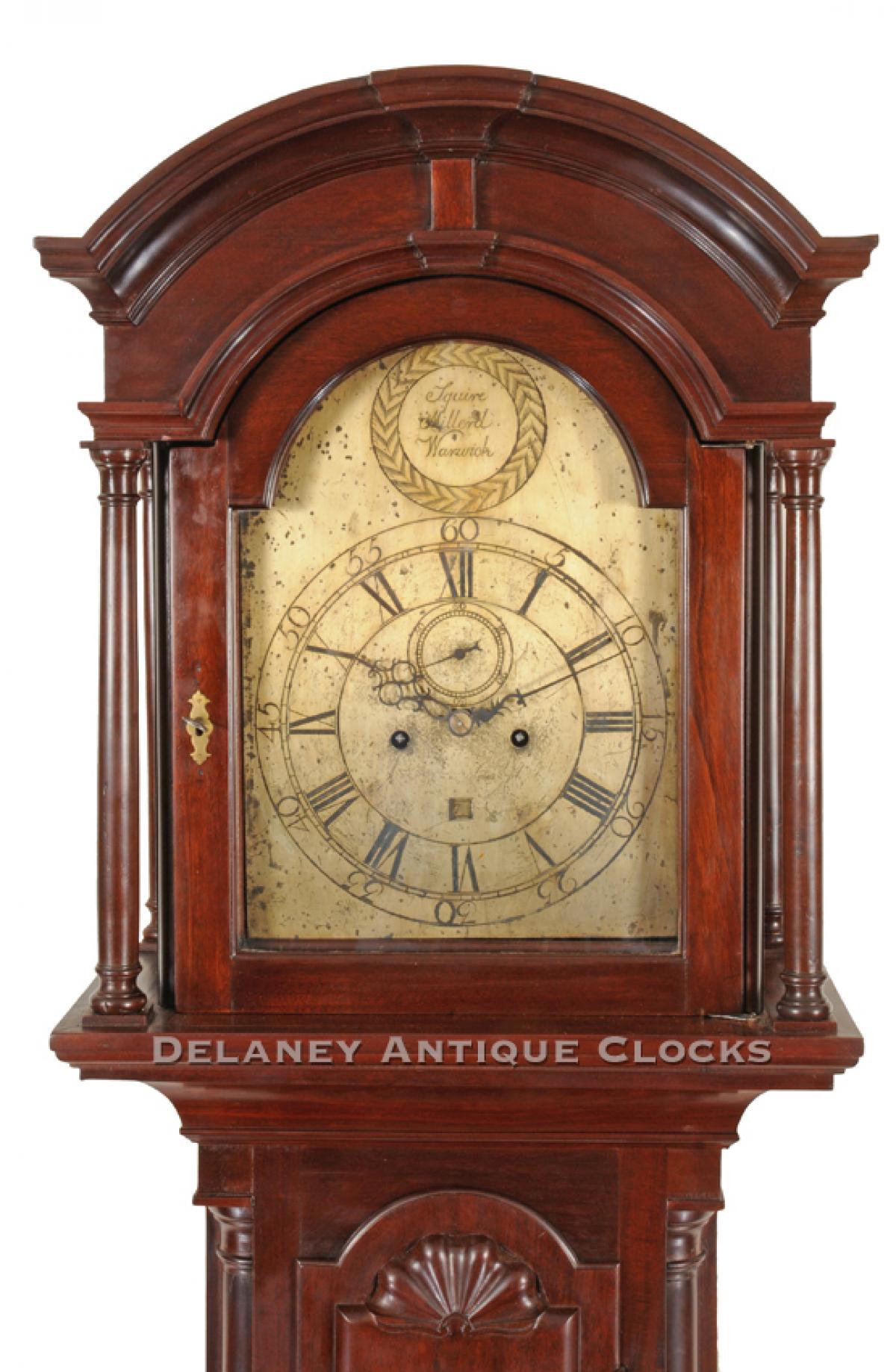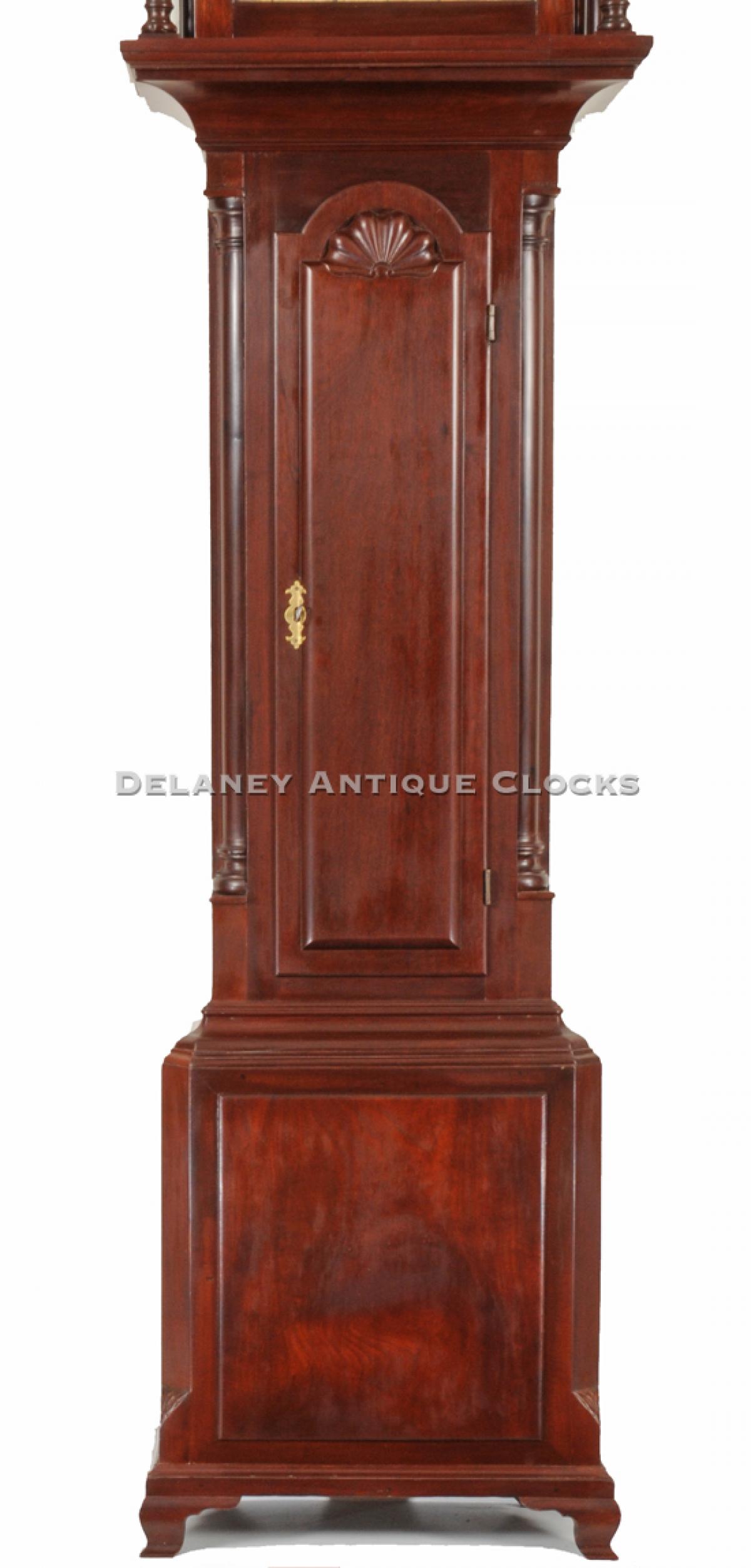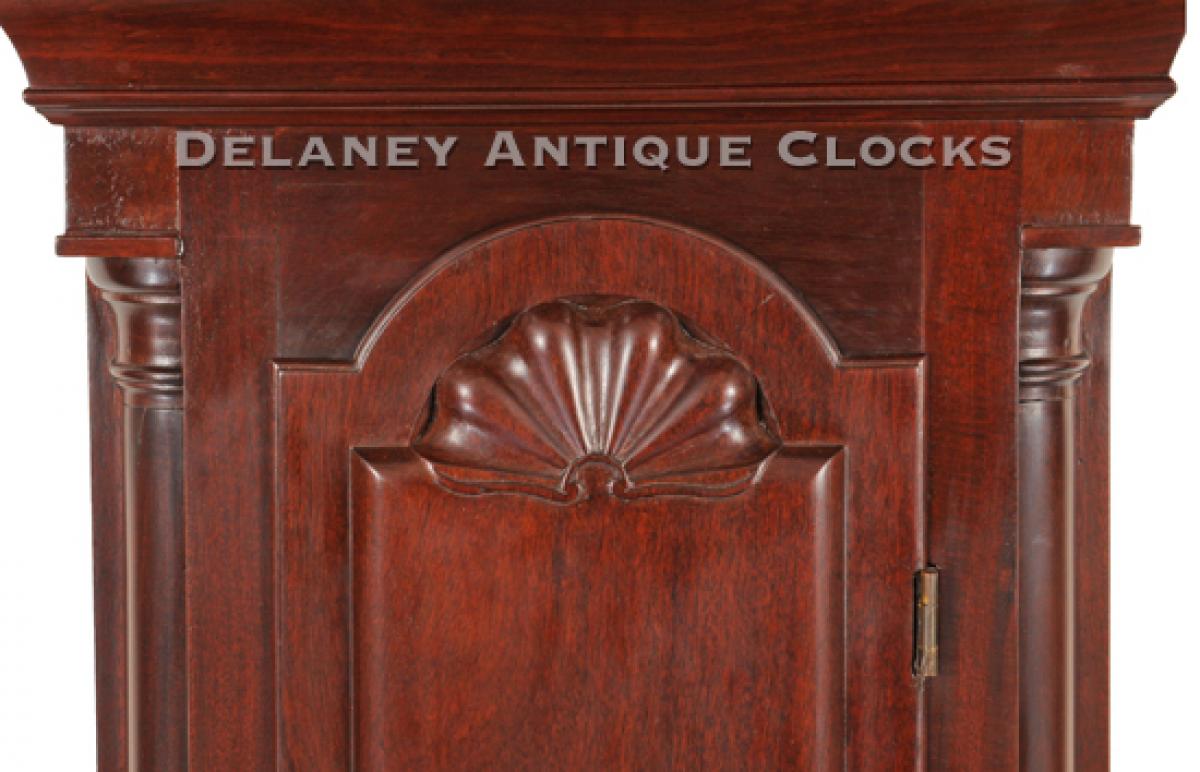Squire Millerd of Warwick, Rhode Island. A rare Chippendale mahogany block and shell tall case clock. XXSL26.
This rare Warwick, Rhode Island, tall case clock was made by Squire Millerd. This fine case has a block and shell carved door that is a distinctive form found on the very best clocks produced in Warwick. The specific format of the shell, together with the paneled base, are well-documented characteristics of these clocks. This is the only example constructed from mahogany.
This example is formatted in the traditional proportions that one would expect from the Rhode Island region circa 1795.
This mahogany case has been recently cleaned up and now exhibits a rich nut brown color and consistent finish. The case is elevated on four distinctive ogee bracket feet that are typical of Rhode Island cases. The stepped ogee molding transitions to the base, which features an applied panel of dense mahogany. The front corners of the base are canted. The lower section of this detail transitions via a cut angle. The base transitions to the waist section through detailed stepped ogee molding. The waist section is long and is fitted with a large tombstone-shaped waist door. Through this door, one can gain access to the weights and pendulum. The door features a block panel of a convex form. A carved shell highlights the overall design. The brass Chippendale door lock escutcheon conforms to the shape of the panel. Smoothly turned and shaped quarter columns are set into the front corners of the waist. A cove molding supports the hood. This hood features four fully turned and shaped hood columns. All four are free-standing. These columns visually support the double-break arch pediment. A small arched molding above the door is separated from the larger cove molding above it by an unadorned frieze. A central keystone plinth is centered in this location above the arched and glazed door. This case does not appear to have been fitted with finials.
The dial is brass and finished in a silver wash. This is a popular format for the region and the time period this clock was made. The details, the time ring, and the name boss are skillfully engraved. The time ring is formatted in Roman numeral hour markers and Arabic five-minute markers. A subsidiary seconds dial is located in the traditional position. This is also true of the small square calendar day aperture. This dial is signed in the lunette by the clockmaker, “ Squire / Millerd / Warwick,” in a script format. This boss is trimmed in a wonderful herringbone pattern.
The movement is constructed in brass. It is designed to run eight days on a full wind and is weight driven. This clock strikes the hours on a cast iron bell. The movement is mounted with original cuts steel rococo style hands. The brass time and strike movement has an original pendulum with brass-capped lead bob and a pair of brass jacketed lead weights. The movement has been serviced recently and is in fine running condition. It is good quality.
This clock stands only 7 feet 1 inches tall and was made circa 1785.
Inventory number XXSL26.
Squire Millerd was born the son of Nathaniel and Elizabeth (Kingsley) Millerd on January 26, 1749. He married Patience Pierce (Born ca 1745 – died on February 14, 1830) of Providence, the daughter of Jonathan Pierce. They had three children. He served in the Militia in 1776 and was soon raised to the rank of Captian in Col Waterman's 2nd Rhode Island Regiment, the Providence Regiment. He is recorded as helping to defend Pruduce Island from the British, who were stealing livestock off the island. In June of 1780, he was appointed Captian of the Second Warick Company. He was reappointed to the same position in 1781. After the war, it is recorded that he was a member of the Warwick Town Council. He also became an attorney and served as a member of the Rhode Island General Assembly and a State Representative. He died on January 2, 1820, in Warwick, having an estate that included 35-40 acres of land west of the Post Road. He is buried in a private graveyard at the back of the Millerd homestead in Cowesett, Rhode Island. His gravestone is inscribed, "He stedfastly held to the faith and died in the hope of a blessed immortality. "

